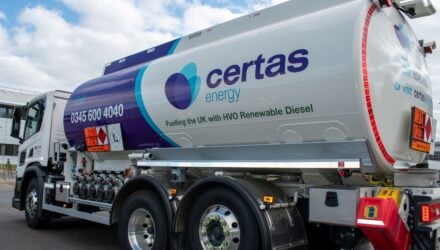New York is often ahead of the curve when it comes to lifestyle choices and inventions to be taken on worldwide. It’s the city that gave the world air conditioning and toilet paper, and crisps and Club sandwiches. New Yorkers aren’t afraid to try something new – so the news that the city aims to have the most electrically-powered public service vehicles of any city in the US, adding 2,000 to its municipal sedan fleet by 2025, shouldn’t surprise anyone.
The city’s ambitions to dramatically raise the current percentage (250 out of 11,000) are exciting, but the fact that it will take the best part of a decade is somewhat chastening. That target shows the difficulties associated with such a move for any city, company, firm or factory; while the environmental benefits will be immediate, the initial outlay will offset any financial savings from cleaner fuel for years.
Heavy duty vehicles such as trucks or buses are responsible for a quarter of all CO2 emissions in the EU. That said, some firms are at least trying to lessen the effect of their huge vehicles on the environment. Lease Van is well known for its range of e-vehicles including the e-NV200, while in April rental group AMT announced that it had made a £200,000 investment to add the newest electrical models to its fleet, including Tesla Model S and Nissan Leaf cars.
BMW made the headlines in 2015 when it deployed Europe’s first 40-tonne, fully electric vehicle as a vehicle to transport parts across Germany. The truck has a range of 100km on a full battery, which can be charged in 3-4 hours. Logistically this clearly presents huge problems for any fleet; no firm of HGVs could sustain such limitations and hope to survive for any period of time.
Until then, the hybrid or eco-friendly vehicle looks to be the more likely option. Supermarket giants such as Waitrose and Sainsbury’s pledged to introduce more dual-fuel eco-friendly vehicles into their fleets in a bid to cut emissions – the diesel/gas combination also powers the lorries’ refrigeration systems. British Gas commissioned more electric vans for its fleet in 2014, but leading the way – unsurprisingly – is the Environment Agency, with eco-friendly vans, hatchbacks and even boats.
These moves are noble in intention but presumably just a stop-gap until fully-electric vehicles become financially viable to everyone. The benefits of that time will be felt by us all; according to Engineering and Technology magazine government investment in electric car infrastructure could boost the UK economy by £51bn a year.
The article, using research from the Institute of the Motor Industry, asserted that 320,000 jobs could be created if low emission vehicles were made more convenient. Perhaps surprisingly, only 1,000 technicians in the UK are currently qualified for electric car maintenance, and these vehicles are not something for the amateur to tamper with when one considers the 600-volt battery units involved in operation.
There is still some way to go to plug these gaps and convince companies that equipping themselves with the right e-vehicles is viable and sensible, but once it happens expect the trend to spread quickly, and the benefits to become immediately apparent.


















